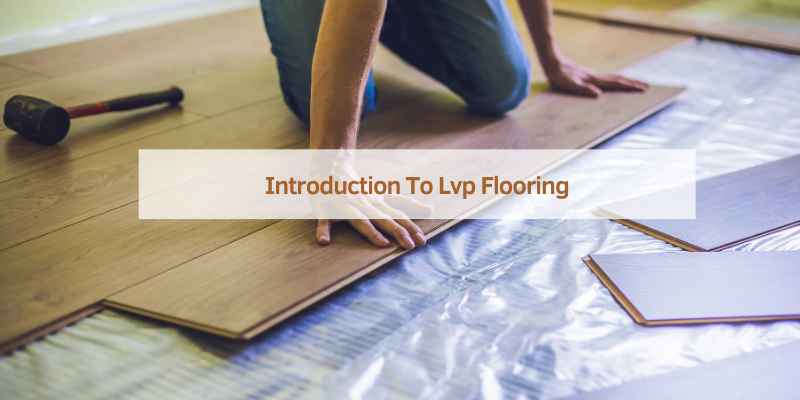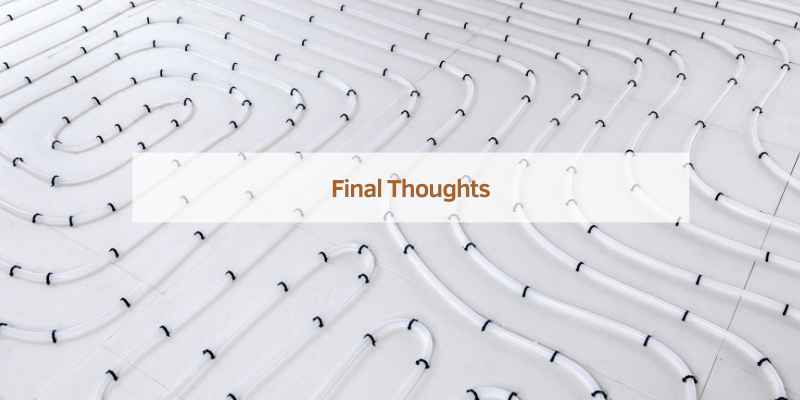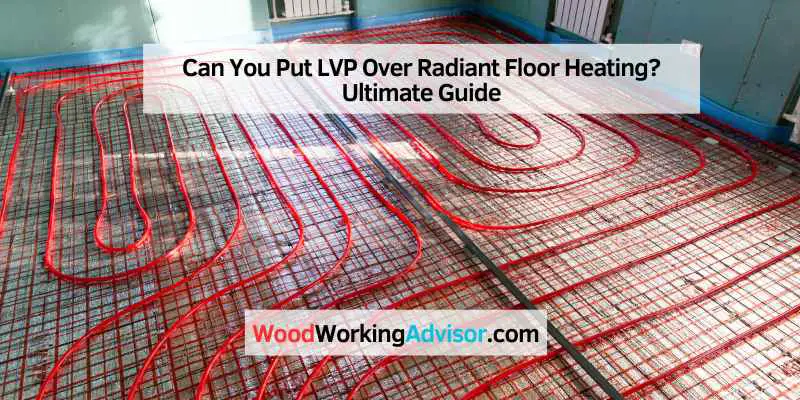Yes, you can install Luxury Vinyl Plank (LVP) over radiant floor heating. Ensure the radiant system does not exceed 85°F.
Luxury Vinyl Plank (LVP) has become a popular flooring choice due to its durability and aesthetic appeal. Its compatibility with radiant floor heating makes it an excellent option for modern homes. Radiant heating systems provide consistent warmth, enhancing comfort. When installing LVP over radiant heating, ensure the surface temperature stays below 85°F to prevent damage.
This combination offers energy efficiency and cost savings, making it ideal for cold climates. Always follow manufacturer guidelines for the best results. Proper installation ensures longevity and optimal performance of both the flooring and heating systems.
Introduction To Lvp Flooring
Luxury Vinyl Plank (LVP) flooring is popular for its durability and look. It mimics the appearance of wood or stone. LVP is water-resistant and easy to maintain. This makes it ideal for many rooms, including kitchens and bathrooms. The installation process is also straightforward. Many homeowners choose LVP for its affordability and versatility.
LVP is highly durable and can last for many years. It is also water-resistant, making it perfect for wet areas. The flooring is easy to clean and maintain. LVP is affordable and offers a variety of styles and colors. It is also comfortable to walk on.
LVP works well with radiant floor heating systems. The material can handle the heat without damage. This makes it a good choice for homes with underfloor heating. Always check the manufacturer’s guidelines for compatibility. Some LVP products are specially designed for heated floors. Proper installation is crucial for optimal performance.

Basics Of Radiant Floor Heating
Radiant heating warms your floor from below. It uses heating elements or hot water tubes. These are placed under the floor surface. The heat rises from the floor and warms the room. This method is very efficient. It provides even warmth throughout the room.
There are two main types of radiant heating systems. Hydronic systems use hot water that flows through tubes. Electric systems use electric cables or mats under the floor. Both types can be installed under many floor types. Each type has its own advantages and costs.
Combining Lvp With Radiant Heat
Luxury Vinyl Plank (LVP) is a great flooring choice. It is durable and water-resistant. LVP also comes in many designs and colors. Radiant floor heating keeps your home warm. It also helps save energy. Combining LVP with radiant heat makes your floors warm and stylish. This combination is also comfortable for your feet. LVP is easy to clean and maintain.
LVP can expand with heat. This may cause gaps or buckling. Proper installation is very important. Check the manufacturer’s guidelines for temperature limits. Use the right underlayment to protect your floors. Always consult a professional for advice. Avoid high temperatures to keep the LVP in good shape.
Installation Insights
Ensure the subfloor is clean and dry. Any debris can cause issues. Check the radiant floor heating system for proper function. Look for any damage or leaks. Install an underlayment compatible with both LVP and radiant heating. This step is crucial for proper insulation. Measure the room carefully to ensure a perfect fit. Accurate measurements prevent waste. Acclimate the LVP flooring by leaving it in the room for at least 48 hours. This helps the material adjust to the room’s temperature and humidity.
Professional installation ensures proper placement and reduces errors. Experts have the right tools and experience. DIY installation can save money but requires careful planning. Follow manufacturer guidelines strictly to avoid issues. Time and effort are significant factors in DIY projects. Some find it rewarding, while others may get frustrated. Consider the complexity of the radiant floor heating system. More complex systems may need professional help.
Material Matters
LVP stands for luxury vinyl plank. It’s important to choose the right one. Not all LVPs are the same. Some are better for radiant floor heating. Check the manufacturer’s guidelines. They tell you if the LVP is suitable. Look for LVPs that are heat-stable. They should not warp or buckle. Thicker LVPs are usually better. They provide more insulation. Make sure the LVP has a good wear layer. This helps it last longer. The wear layer should be at least 20 mils thick. This ensures durability and comfort.
LVP can affect heat transfer. Thicker LVPs may slow down heat transfer. This means the floor takes longer to heat up. Choose LVPs that are designed for radiant heating. These allow better heat transfer. Always check the R-value. This tells you how well it resists heat. Lower R-values are better for heat transfer. Proper installation is key. Gaps can cause heat loss. Make sure the LVP is installed correctly. Follow all installation guidelines. This ensures efficient heat transfer.
Temperature Regulations
Luxury Vinyl Plank (LVP) works well with radiant floor heating. Keep the temperature between 75°F and 85°F. This range ensures comfort and safety. It also protects the floor from damage. Always check the manufacturer’s guidelines for specific settings.
Overheating can damage LVP. Never let the temperature exceed 85°F. High heat can cause the planks to warp. It can also lead to adhesive failure. Use a thermostat to monitor the temperature. This prevents overheating and keeps your floor safe.
Long-term Performance
LVP is known for its durability. It can handle high temperatures well. Radiant floor heating can make floors warm. LVP stays strong and does not warp. Quality LVP is heat-resistant. It keeps its shape over time. Always choose good quality LVP for best results. Low-quality LVP can get damaged by heat.
Keep your LVP clean. Dust and dirt can scratch the surface. Use a soft broom or vacuum. Avoid wet mopping often. Water can seep into the seams. Use a damp cloth instead. Protect the floor from heavy furniture. Use pads under legs of chairs and tables. This helps to avoid dents. Keep an eye on the floor’s condition. Fix any damage quickly to keep it looking new.
Case Studies And Real-life Examples
Discover the benefits of installing luxury vinyl plank (LVP) over radiant floor heating. Real-life examples showcase enhanced comfort and energy efficiency. Case studies demonstrate successful installations, highlighting LVP’s compatibility and durability.
Success Stories
Many homeowners have installed LVP over radiant floor heating. Sarah from New York shared her experience. She installed LVP in her kitchen. The floor stays warm during cold months. She loves the comfort and look.
John from California also shared his story. He installed LVP in his bathroom. The heating system works perfectly. The floor is always cozy and dry. He recommends LVP for radiant heating systems.
Common Pitfalls To Avoid
Some people do not check the compatibility of LVP with their heating system. This can cause problems. Always check the manufacturer’s guidelines before installation.
Another pitfall is poor installation. Make sure the floor is level. Uneven surfaces can cause damage to both LVP and the heating system.
Avoid using thick underlayment. It can block heat transfer. Choose a thin, suitable underlayment for best results.
Final Thoughts
Ensure your radiant floor heating is working correctly. The surface must be smooth and clean. Check the manufacturer’s guidelines for your LVP flooring. This will help avoid any issues. Use a proper underlayment to protect the LVP and heating system. This also adds comfort and insulation. Monitor the temperature to avoid damage to the LVP. Do not let the floor get too hot. Follow these steps to enjoy a warm and stylish floor.
Smart thermostats are becoming popular. They help control the temperature easily. Energy-efficient systems are also on the rise. These systems save money and the environment. Innovative materials for underlayment are being developed. They improve comfort and insulation. DIY-friendly kits make installation easier for everyone. These trends will shape the future of heated flooring.

Frequently Asked Questions
Can You Install Lvp Over Radiant Heat?
Yes, you can install LVP over radiant heat. Ensure the LVP is compatible with radiant heating systems for best results.
What Vinyl Plank Flooring Is Compatible With Radiant Floor Heating?
Luxury vinyl plank (LVP) flooring is compatible with radiant floor heating. Ensure the flooring is labeled as radiant heat approved.
Can You Put Vinyl Flooring On Top Of Underfloor Heating?
Yes, you can install vinyl flooring over underfloor heating. Ensure the vinyl is compatible with heated floors. Proper installation is crucial for optimal performance.
What Flooring Can Be Installed Over Radiant Heat?
Hardwood, tile, laminate, and vinyl flooring can be installed over radiant heat. Ensure materials are compatible with radiant systems.
Conclusion
Installing LVP over radiant floor heating is feasible. Ensure proper installation for optimal performance and longevity. Choose compatible materials to maximize efficiency. Consulting professionals can help avoid potential issues. This combination offers a comfortable, stylish flooring solution. Enjoy warm, cozy floors throughout your home.


